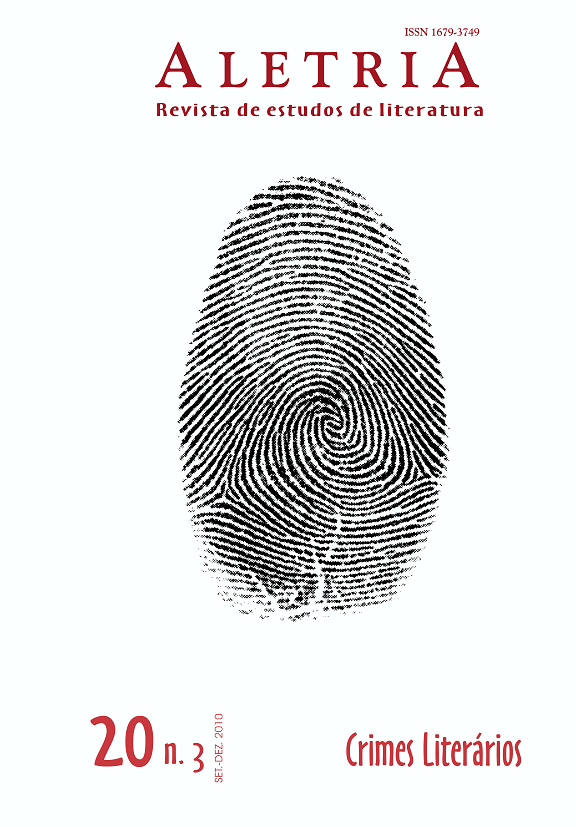Between Words and Actions: Crime in Guimarães Rosa’s Language
DOI:
https://doi.org/10.17851/2317-2096.20.3.243-255Keywords:
crime, story, narrative ambiguity, Guimarães RosaAbstract
In this paper, we argue that the narrator of Guimarães Rosa’s “– Uai, eu?” narrates his crime to a narratee, his lawyer, in such a way that it becomes possible for the reader to perceive the ambiguity of his speech and to reflect about his guilt. To achieve our aim, we use Gerard Genette’s and Gerald Prince’s terminology.
Downloads
References
BAKHTIN, Mikhail. Marxismo e filosofia da linguagem. Trad. Michel Lahud e Yara Frateschi Vieira. São Paulo: Hucitec, 2004.
FIORIN, José Luiz. As astúcias da enunciação. São Paulo: Ática, 2002.
GENETTE, Gérard. Discurso da narrativa: ensaio e método. Trad. Fernando Cabral Martins. Lisboa: Arcádia, 1979.
NOVIS, Vera. Tutaméia: engenho e arte. São Paulo: Perspectiva, 1989.
PRINCE, Gerald. Introdução ao estudo do narratário. Trad. Cláudia Maria Xatara e Wanda Aparecida Leonardo de Oliveira. Glota, S. J. do Rio Preto, n. 16, p. 1-45, 1994-1995.
REIS, Carlos; LOPES, Ana Cristina. Dicionário de teoria da narrativa. São Paulo: Ática, 1988.
RIBEIRO, Renato Janine. O letrado e o guerreiro: ou dois ensaios sobre o âmago terrível da linguagem. Scripta, Belo Horizonte, v. 5, n. 10, p. 307-320, 1º sem. 2002.
ROSA, João Guimarães. Tutaméia (terceiras estórias). Rio de Janeiro: Nova Fronteira, 2001.
SIMÕES, Irene Gilberto. Guimarães Rosa: as paragens mágicas. São Paulo: Perspectiva, [s. d.].
WISNIK, José Miguel. O famigerado. Scripta, Belo Horizonte, v. 5, n. 10, p. 177-198, 1º sem. 2002.
Downloads
Published
How to Cite
Issue
Section
License
Copyright (c) 2010 Valda Suely Silva Verri (Autor)

This work is licensed under a Creative Commons Attribution 4.0 International License.
Authors who publish with this journal agree to the following terms:Authors retain copyright and grant the journal right of first publication with the work simultaneously licensed under a Creative Commons Attribution Non-Commercial No Derivatives License that allows others to share the work with an acknowledgement of the work's authorship and initial publication in this journal.Authors are able to enter into separate, additional contractual arrangements for the non-exclusive distribution of the journal's published version of the work (e.g., post it to an institutional repository or publish it in a book), with an acknowledgement of its initial publication in this journal.Authors are permitted and encouraged to post their work online (e.g., in institutional repositories or on their website) prior to and during the submission process, as it can lead to productive exchanges, as well as earlier and greater citation of published work (See The Effect of Open Access).





